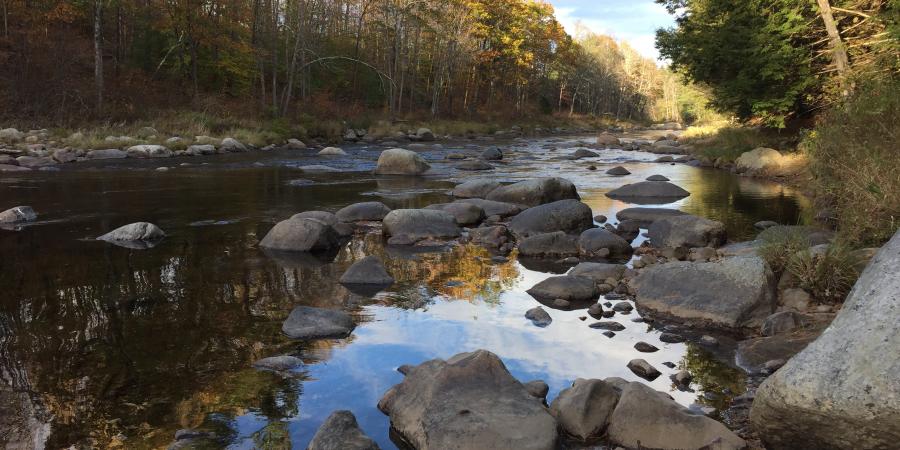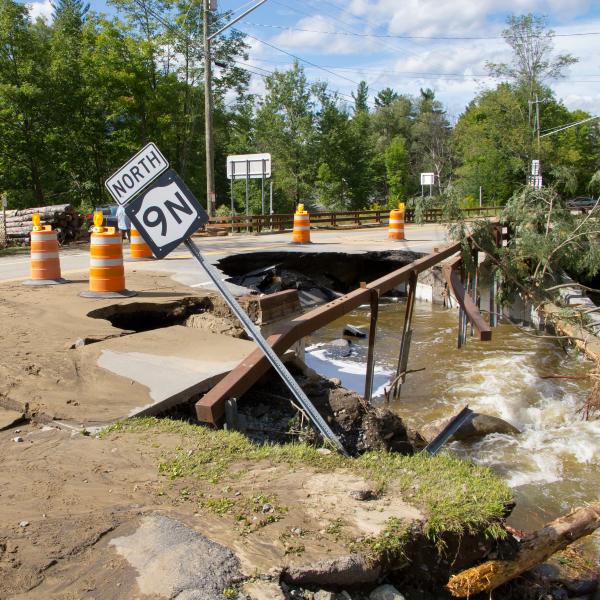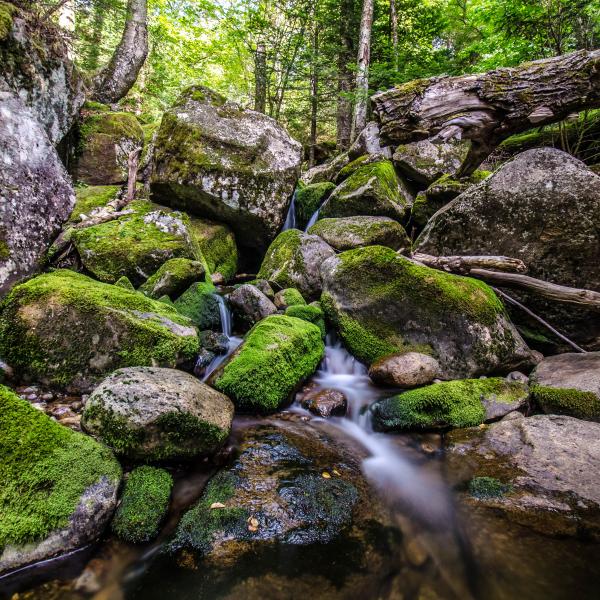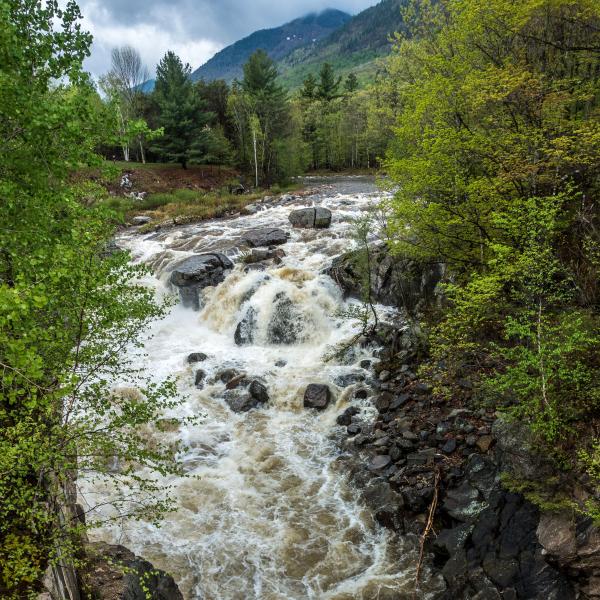At the Ausable Freshwater Center (AFC), we believe that healthy streams with shaded, cool waters, ample floodplains, and self-regulating flows are essential to sustaining ecological diversity and thriving communities.
Unfortunately, today, sections of many streams in the Ausable watershed are in disequilibrium. Historic land clearing and dredging, development in the floodplain, including roads that encroach on streambanks, and alterations to channels (bridges, culverts, rip-rap, dams) have compromised stream stability. Undersized culverts block fish passage, exacerbate erosion, and collect debris that blocks water flow during storms, undermining and flooding roads, increasing costs to our towns. Sand, gravel, cobble, and boulders from eroding banks fill delicate pool habitats, pile cobble in shallow riffles, widening channels, and cutting off access to floodplains. Unabated, erosion continues, trees fall, banks remain bare, habitat is smothered, and flood resilience for our communities declines, while maintenance costs mount.
The good news? We can replace undersized culverts, allowing streams to run free under roads. And with careful technical assesment and planning, we can repair and restore streams - ensuring they reach their potential and are capabale of self-sustaining their form and function. Repairs are long-lasting, require little to no maintenance, blend in with the streamscape, and help our streams regain their lost vitality. Where streams are not in conflict with infrastructure we actively support regulations and conservation tools such as easements that protect river corridors, wetlands, meander areas, and floodplains from development, that limit new encroachments (e.g. roads, bridges, berms) on streams, and - where possible - encourage removal of existing encroachments.
The effectiveness of these interventions will be only as successful as our willingness to give streams the room to roam -- as healthy streams do over time. Only then can they find and maintain their equilibrium, manage storm flows, and fully contribute to the health and vibrancy of our communities. AFC is dedicated to providing the public with the information it needs to make thoughtful decisions that protect and restore our freshwater systems while keeping communities safe and thriving.
Current and Past Projects:
Take a virtual tour of our river restoration projects!
Take a virtual tour of our climate-ready culvert projects!
Climate-Ready Culverts - AFC surveys road-stream crossings and designs replacements for undersized culverts, coordinating funding, permits, and engineering, and supervising construction. Current projects include the Otis Brook system in the Town of Jay, a culvert on Ausable Drive also in Jay, and a culvert on a beautiful trout stream in the Town of Wilmington. We also work in partnership with The Nature Conservancy, Adirondack Chapter and the US Fish and Wildlife Service in the Boquet watershed. Past projects include Otis Brook at Jay Mountain Road and Rocky Branch Tributary at Nugent Road. And see our recent story that details the three primary benefits of climate-ready culverts.
Ausable River Restoration Program - AFC and its partners are leading a $1.1 million effort to restore flood resilience and stream health to the East Branch of the Ausable River in the Town of Jay. Ecosystem Planning and Restoration of Maryland, Schoder Rivers PC of New York, Fitzgerald Environmental Associates of Vermont, and the US Fish and Wildlife Service teamed up with AFC in the successful bid for this planning project that has moved to implementation. Funds for the project were awarded to the Town after Tropical Storm Irene and are administered by the Governor's Office of Storm Recovery. The East Branch restoration team used field data, hydrologic and geomorphic models, in depth geomorphic surveys of the river, guidance from the Town government, and input from Jay residents and business owners to develop a comprehensive plan for flood resilience for the East Branch in the Town of Jay. Click the link at the head of this paragraph to learn more.
Dream Mile Natural Channel Design Restoration, West Branch - AFC coordinated the restoration of a key reach on the Dream Mile along Haselton Road that includes the outlet of Big Brown Brook, known as the Culvert Pool. The three-year project, begun in 2017, restored sinuosity and function to this reach and ensured the stability of the Culvert Pool. Check out past natural channel design projects: Rocky Branch, Riverlands, Keene Weir, and the Dream Mile.
J. & J. Rogers Pulp and Paper Mill /Rome Dam Removal, West Branch - AFC worked with the Governor's Office of Storm Recovery, the Town of Jay, Essex County, and the engineering firm Milone & MacBroom to plan and implement the deconstruction of the former J. & J. Rogers Co. pulp and paper mill dam, known locally as the Rome Dam. See the PDF of our 2019 Gallery Edition Voice of the River newsletter (sidebar to left) to read the full story and see incredible images of the dam and the freed river.



